Session Data
- Date: 07/1/2024
- Time: 19:29 – 00:05 UT
- Seeing: III: OK – Moderate
- Transparency: III. Clear with slight haze
- Temp: 0.6 C,
- Air Pressure: 1031mb,
- Humidity: 81%,
- Dew Point: -2.2C,
- Wind Speed: 6mph
- Average FWHM: 4.68
- Average SQM: 20.16 magn/arcsec^2
Scope: Altair 250mm RC f/5.3 Camera: ZWO ASI 183MM Pro, No Filter. Dark subtracted and Flat fielded.
Session Notes:
First image of the night and something appears to be off. the stars are really oval and Sharpcap Drift log is all over the place. I want to bag NGC253 – the last on my Caroline Herschel list, so I will push on an get that logged.
Having just slewed to my second target the stars are now back in shape. The only thing I think is going on here is the mirror is shift when low down to the horizon as NGC253 was. I really need to strip this scope down and give it a really good overhaul. Looking at the wind trace the following day, I was getting gusts of 11mph. This may well be the actual cause.
All images are North up and East to the left.
22:49UT Temperature has dropped to below zero
NGC253
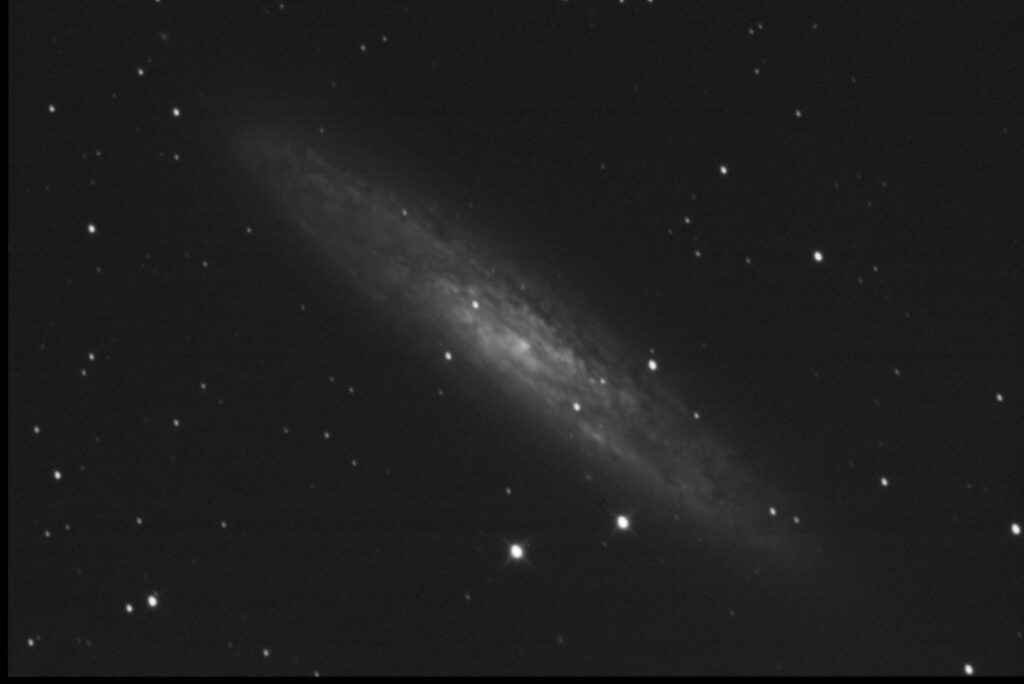
This galaxy is huge. Even after 7 mins I’m seeing the full diameter of 25’ min, which almost fills the full FOC of the frame.
I think my collimation is off as the stars are a little oval, but I’ll live with it for the moment.
To the South of the core are two bright 9.8sh mag stars with two more further to the North aligned at the same angle.
The way the galaxy is tilted, the core seems offset to the South of the centerline a little. Outwards from it you can see the start of the two arms of the dust lane spiraling outwards
The dark dust lanes to the Northtwest are considerably darker than those to the Southeast and as you work your way out towards the edge along its length the mottling becomes quite random.
This is the last object I had to observe to complete my Caroline Herschel observing programme.
Image integration 630 sec
NGC1528, HT25
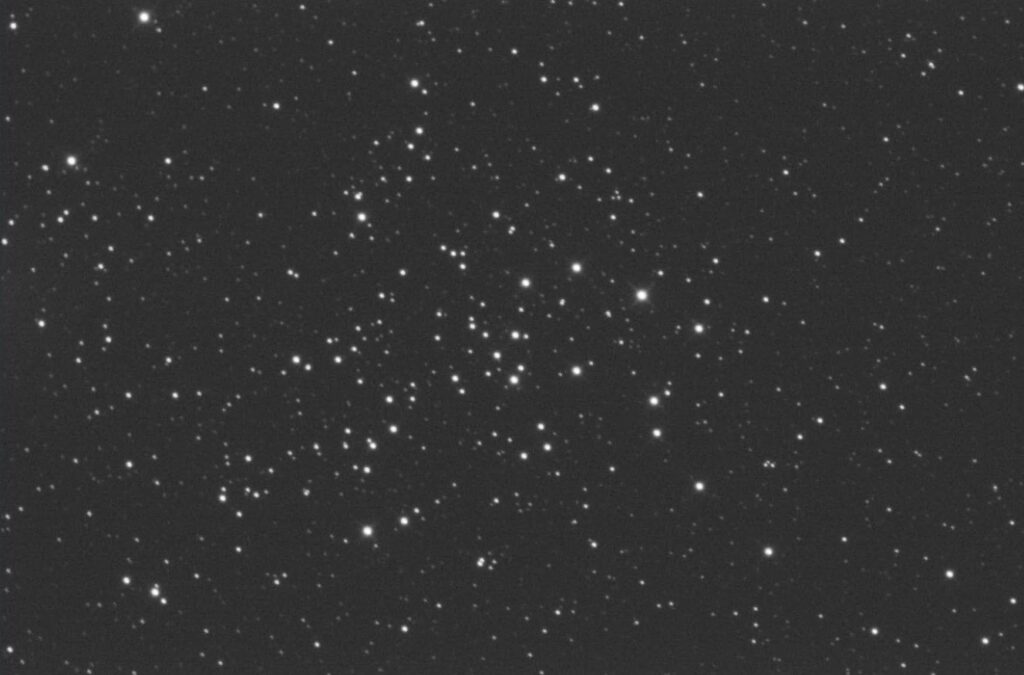
Another of those Open Clusters that is a little too large for my 23’ high FOV, but it just fits.
It has a bias towards the Southeast with the principle brightest stars towards the Western side. The bulk of the stars are in the 9.7 to 11.2 mag range. I guess there are 60 of these within a 17’ circle.
If I had a colour camera I probably would have seen a couple of B9 and A2 hot stars 3.5’ to the Northwest of the centre.
Just to the left of centre I see what looks like an elongated figure ‘8’
Image integration 75 sec
NGC4605, HT65
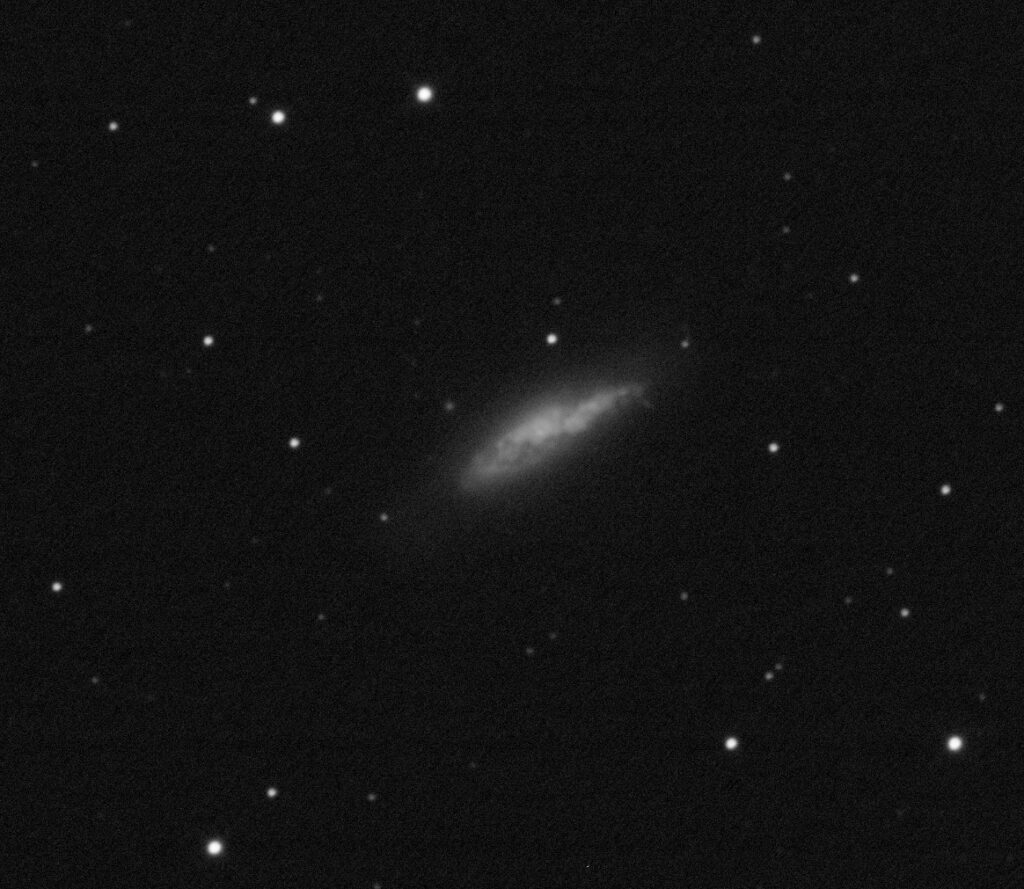
This reminds me a little of the Whale galaxy NGC4631. That whale shape with the mottling of the dust lane running along its length.
The galaxy has a darker lane running North/South that cuts it into two bodies, with the slimmer section towards the Southeast that has a fleck of light sticking out at 90 degrees to the galaxy’s longitudinal axis.
To the Northeast is a small 15.5 mag galaxy PGC42561.
Total Integration 405 sec
NGC2841, HT49
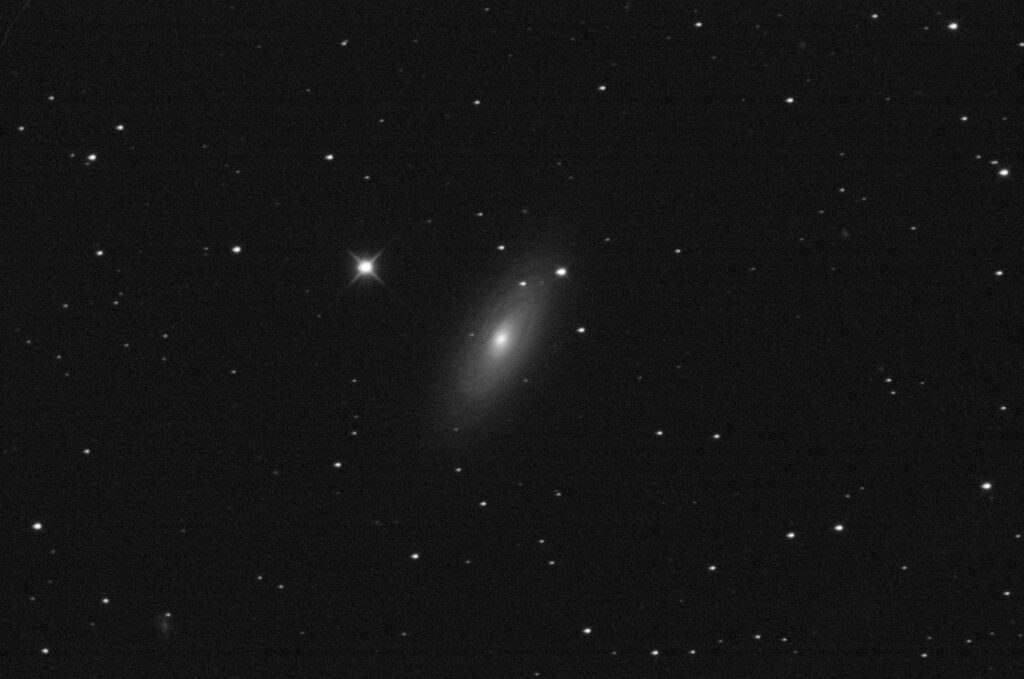
An almost face of galaxy with a diameter of 7.6’. The soft bright core with 4 dark dust lane bands to the Northeast and one to the Southwest.
To the Southeastern edge of the frame lies PGC26572 a 17.8 mag galaxy and on scanning further there is another to the West PGC2387030
Total integration 360 sec
NGC3184,HT52
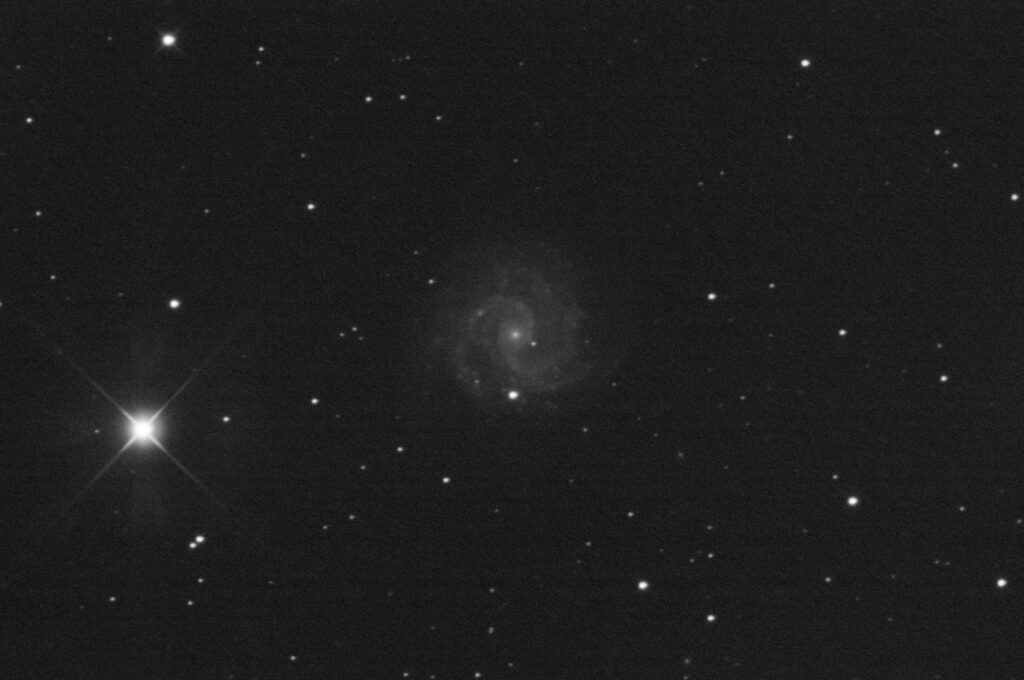
Conditions are deteriorating a little. This is a face on galaxy with a diameter of 6’. The core is small and off it come two arms that spiral about 180 degrees around it. The Northern arm splits in two. One arm continues around to the South, while the second goes off to the East and South where it seems to snake around like a meandering stream.
On the arm at the Southwest there appears to be faint knots of HII regions.
Total integration 390 sec
NGC2683/HT47
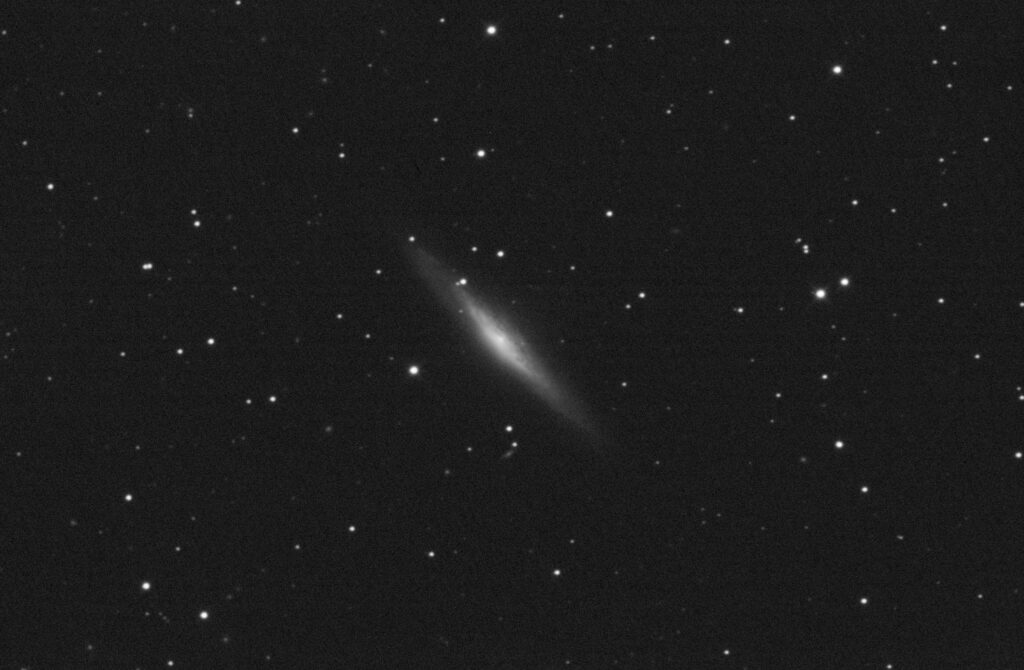
An almost edge on galaxy of about 18 in diameter. The core is quite condensed and spreads it light so that whatever material is to the South looses any kind of detail. More like a cloud. The Northern face you can make out spiral lanes and mottling and this detail extends more into the Southwestern edge than the other.
On the Northeastern edge of the outer disk you can just make out a brighter line of elongated dots. Looking at the DSS2 colour image, these are a a sky blue colour and indicate active star forming regions
To the South 3.3′ is a small galaxy at RA 08 52 40.62 DEC +33 21 51.69. Nothing shows up in the usual catalogues, but using Aladin and Simbad identify this as 2MASX J08524061+3321516 A LINER-type Active Galaxy Nucleus with a mag of 14.4A little further to the East is another, PGC24905